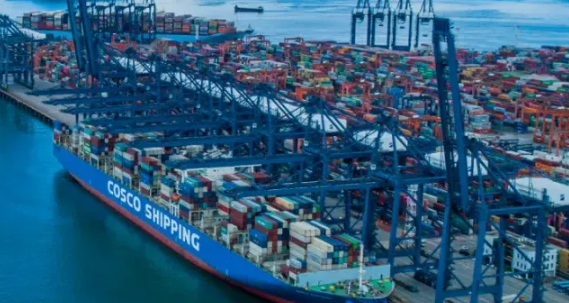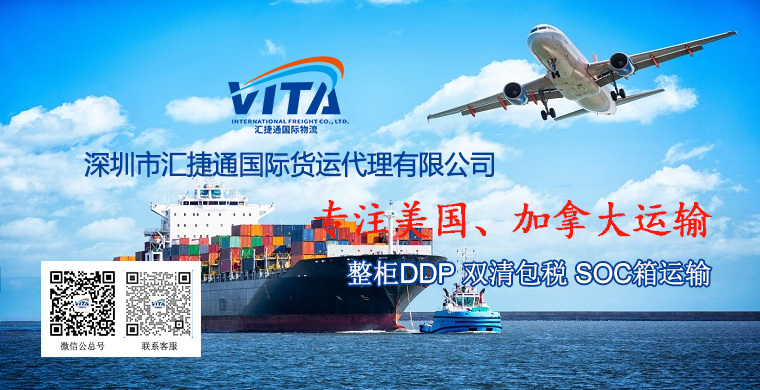All categories >
Detailed Explanation of International Maritime Container Loading Techniques (Dry Cargo Knowledge Sharing for International Maritime Transport)
Categories:
Industry Encyclopedia
Solution
Time of issue:
2025-04-03 17:04
Views:
When exporting, general businesses mainly worry about incorrect cargo data, cargo damage, and data inconsistencies with customs declaration data, potentially leading to customs clearance issues. Therefore, before loading into containers, shippers, warehouses, and freight forwarders must coordinate effectively to avoid such situations.
1. Avoid loading cargo of different shapes and packaging together as much as possible.
2. Cargo that may leak dust, liquid, moisture, or odor from its packaging should be kept separate from other goods as much as possible. "If unavoidable, use canvas, plastic film, or other materials to separate them." said Cheng Qiwei.
3. Place lighter goods on top of heavier goods.
4. Place goods with weak packaging on top of goods with strong packaging.
5. Place liquid and cleaning goods as far as possible below other goods.
6. Cover goods with sharp corners or protrusions to prevent damage to other goods.

Container Loading Techniques
There are typically three methods for on-site container loading operations: manual loading, loading with a forklift and then manual stacking, and fully automated loading using machinery such as pallet jacks and forklifts for stacking within the container.
1. Under no circumstances should the weight of the goods loaded in a container exceed the maximum load capacity of the container, which is the total container weight minus the container's tare weight. In general, both the gross weight and tare weight are marked on the container door.
2. Each container has a fixed unit weight, so when loading the same type of cargo, knowing the density of the cargo can determine if it is heavy or light cargo. Cheng Qiwei indicates that if the cargo density is greater than the container's unit weight, it is heavy cargo; otherwise, it is light cargo. Prompt and clear differentiation between these two situations is important for improving loading efficiency.
3. Ensure balanced load distribution on the container floor, strictly prohibiting uneven load concentration on one side.
4. Avoid concentrated loads. "When loading heavy goods such as machinery and equipment, the container floor should be lined with wood or other cushioning materials to disperse the load. The approximate safe load per unit area for the bottom of standard containers is: 20-foot container: 1330 x 9.8 N/m², 40-foot container: 980 x 9.8 N/m².
5. When manually loading, pay attention to any loading instructions such as "Do Not Invert", "Keep Flat", or "Vertical Placement" on the packaging. Use loading tools correctly; do not use hand hooks for bundled goods. Goods loaded in the container should be neatly and tightly packed. For easily scattered or fragile goods, use padding or insert plywood between items to prevent movement within the container.
6. When loading pallet goods, accurately determine the internal dimensions of the container and the external dimensions of the packaged goods to calculate the number of items to be loaded, minimizing wasted space and maximizing cargo.
7. When using a forklift, the operation will be limited by the forklift's free lift height and mast height. If conditions allow, two layers can be loaded at once, but a gap should be left between the layers. If two layers cannot be loaded at once, consider the forklift's free lift height and the mast's lifting height when loading the second layer. The mast lift height should be the height of the first layer minus the free lift height to allow the second layer to sit on top of the first layer.
In addition, a typical 2-ton forklift has a free lift height of around 1250px. However, there are also forklifts with full free lift height, which are unaffected by the mast's lifting height as long as the container height allows and easily stack two layers of goods. Furthermore, ensure that wooden blocks are placed under the goods to allow the forks to be easily removed.
Finally, goods should not be loaded unpackaged; at the very least, there should be some packaging. Avoid compromising space to the detriment of goods. Most goods are packaged; only larger items, such as boilers or building materials, are more problematic and require bundling and securing to prevent loosening. However, with care and attention, major issues can be avoided.

Shenzhen Huijietong International Freight Forwarding Co., Ltd. - Professional US Route Transportation Services
In the field of US route transportation, Shenzhen Huijietong International Freight Forwarding Co., Ltd. has become a trusted choice for many customers, thanks to its professional services and extensive experience. Huijietong specializes in US route transportation and provides comprehensive logistics solutions, including sea freight, air freight, land transport, and warehousing services. The company maintains close cooperation with major shipping lines and can provide flexible space arrangements and efficient transportation services based on customer needs.
Choosing Shenzhen Huijietong International Freight Forwarding Co., Ltd. means choosing professional, efficient, and reliable logistics services. For more details, please visit [Huijietong Official Website www.szvif.com
For US routes, choose Huijietong!
Shenzhen Huijietong International Freight Forwarding Co., Ltd., your professional partner for US route transportation.
Service Hotline: 0755-82171929 13560787209

WeChat QR Code
Follow us to get the latest updates on global shipping and trade!
Keywords:
International sea freight,Container,Container loading










